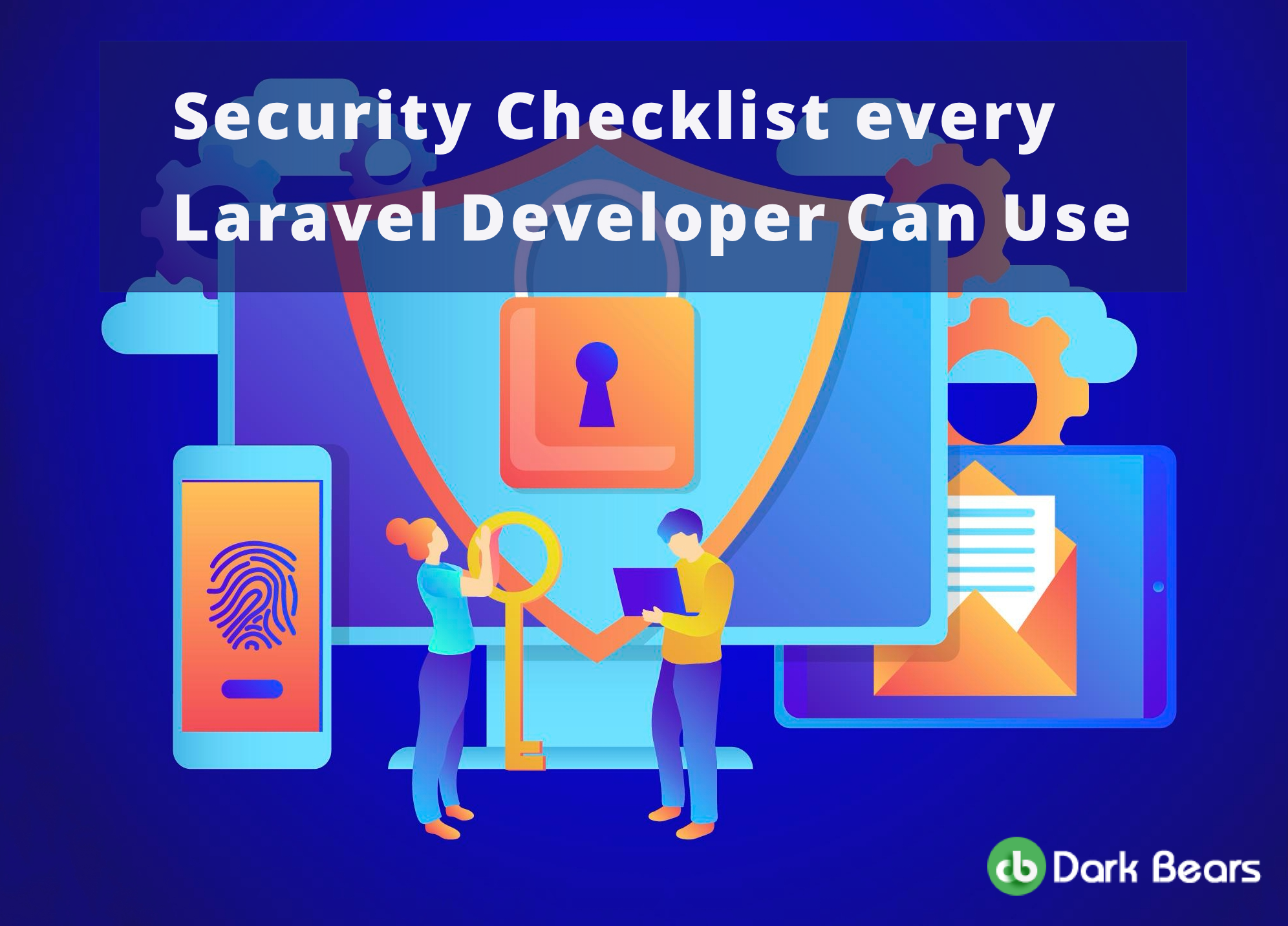admin / July 20, 2021

Whether you own a small business or a large one, website security is the primary concern. Unfortunately, with the advancement of technology, various online attackers and spammers are preparing themselves to discover a new method to attack your website. Therefore, regardless of the costs involved, diligence and pre-emptive efforts must be an indispensable part of your organizational approach.
Your online site can be vulnerable to attacks like cross-site scripting, SQL injections, insecure direct object references, etc.
However, if your website is on the Laravel PHP framework, you can use the Laravel security features to secure your site and network.
We have created Laravel Security Checklist that you can keep handy and stay ahead of your website security concerns.
This is basic, but numerous business owners and site admin end up making mistakes. It will help if you decide carefully between a shared and dedicated server. Additionally, you need to have a website backup in place. Also, make sure that the server is compliant with security protocols like SSH, SSL, FTPS, and VPNs.
Experts always recommend that it’s best to use the latest version of every platform. It is because constant updates from the developers are accomplished to make the system sturdier and failsafe.
If you want your website optimized with security, ensure that all essential firewalls are in place. There are several choices to pick from, so it is highly recommended that you hire a professional Laravel website development company that can guide you in making better decisions.
Laravel provides several in-built security features – for instance, the Authentication system from Laravel. The Laravel system practices two authentication methods to authenticate user information – protectors are used to validating the user data for each user request. At the same time, providers work in recovering user information from the database.
Many laravel developers who provide development services must pay heed to build up the database and the standards and determine the controllers – the rest is for the method to take care of. The built-in authentication features will automatically begin to get synched with the site or the app.
SQL injection is a simple form of unprecedented attacks on sites and apps. These occur due to user information stored in cookies. Use PDO parameter covering to prevent others from striving to improve the SQL queries.
Laravel has Eloquent ORM that uses PDO parameters for binding and limiting SQL injections to an extent. But Laravel also proposes other means to craft SQL queries. Filter and validate everything! No matter where the data comes from, a configuration file, GET, server environment, POST, do not trust it.
Keep in mind that all your passwords and other crucial data are hashed, using solid hashing functions such as Bcrypt. Don’t use vulnerable hashing functions, such as SHA1 and MD5. Laravel framework comes with a native hash tool; use them and leverage the benefits.
We highly recommend leveraging Laravel’s built-in encryption mechanism rather than building your own. As of PHP 7.2, more antiquated encryption libraries have been depreciated, such as Mcrypt. But, PHP 7.2 supports the considerably better Libsodium library preferably. So, if you want to use a distinct encryption library, take a look at Libsodium.
For every active user on your Laravel site or app, the system creates a CSRF token. The use of tokens is to limit outside parties from producing fake requests. Every time a request is made, the platform matches the request saved in the token. If the request does not match the saved token, the request is considered void, and the process does not get executed.
In the XSS attacks, the breachers hack the JavaScript of your site, so whenever a prospect comes to the affected page, the wicked script gets delivered with the worst effects. Therefore, it is crucial to have XSS security in place. Luckily, the Laravel platform has in-built native Laravel security features to shield your site from XSS attacks. The system begins on its own and is the most reliable way to preserve your database.
Fortunately, all sorts of pre-emptive actions need to be taken to protect your site; entrepreneurs should regularly take the site’s backup. In addition, your website admin should save some hours for a backup daily to always support your site in its purest form. Then, in case of any crisis, you will always have the opportunity to return to the backup place.
Do you know when HTTP is deployed on your site, every type of exchange occurs in textual format? That includes sensitive data like personal data and even passwords. It is simple to seize textual content. So, use HTTPS deployment to make your website safe and robust. SSL certification is now moving from the HTTP to HTTPS format, which a competent Laravel development company can establish.
In our opinion, one of the Laravel security best practices is using the HTML Purifier to improve the system’s security. Since this is quite technical, we suggest you hire a developer with expertise for the work.
No matter whether your logging gets failed, be it login efforts, password resets, or debugging data, you must be logging and with an effortless to use and developed package, such as Monolog.
Ensure that your server’s SSL/TLS configuration is updated and perfectly configured. It isn’t utilizing outdated versions of TLS, insecure ciphers, solid security certificates without weak keys, and many more by scanning it regularly.
There are various safety headers that you can utilize to make your websites and applications more protected for minimum effort. These include X-XSS-Protection, HSTS, X-Content-Type-Options, X-Frame-Options, and a Content Security Policy. Ensure that they’re being configured accurately and sent in your request replies.
Whether you have a small static website, a large static website, one page, or a complex web-based application, executing a Content Security Policy (CSP) is the best way to stay ahead of your security concerns. It accommodates the mitigation of a range of standard attack vectors, such as XSS.
Monitor your application security to suspect behaviors and attacks. Understanding when your application is beginning to get attacked is vital to preserving it before it’s too late.
Laravel-ACL package shields controller methods like routes and CRUD in applications and ensures a safe authentication process through role-based appropriate permissions.
Additionally, to verify the security status, this package utilizes voters to scan role-based privileges.
For eliminating any vulnerability of the XSS from the codebase, Laravel Security is an essential package. Currently, Laravel 5 from CodeIgniter 3 is used in this framework to protect your business.
If you want to combine the Laravel with Symfony’s security core, using this package is an ideal way to achieve it.
Honestly, Laravel is one of the most compelling PHP frameworks in the technology world for web development services. However, the best reason the significance Laravel framework has become prominent and valuable is the features that it comes equipped with. Laravel Security is, therefore, not highly difficult to secure proper protection, given the presence of such numerous pre-existing security features.
Certainly, as a developer or business owner, you can choose to add more features, but the website can perform well even without doing so.
They are straightforward to use and support systematic protection against common attack factors and are well experimented with beforehand.
In a nutshell, you can achieve it in your web developing work, and the points mentioned above would ensure better user compatibility.
Are you looking for a reliable Laravel website development company? Your search ends here. We are renowned for delivering high-quality, scalable, and timely web solutions to different business verticals around the globe.




